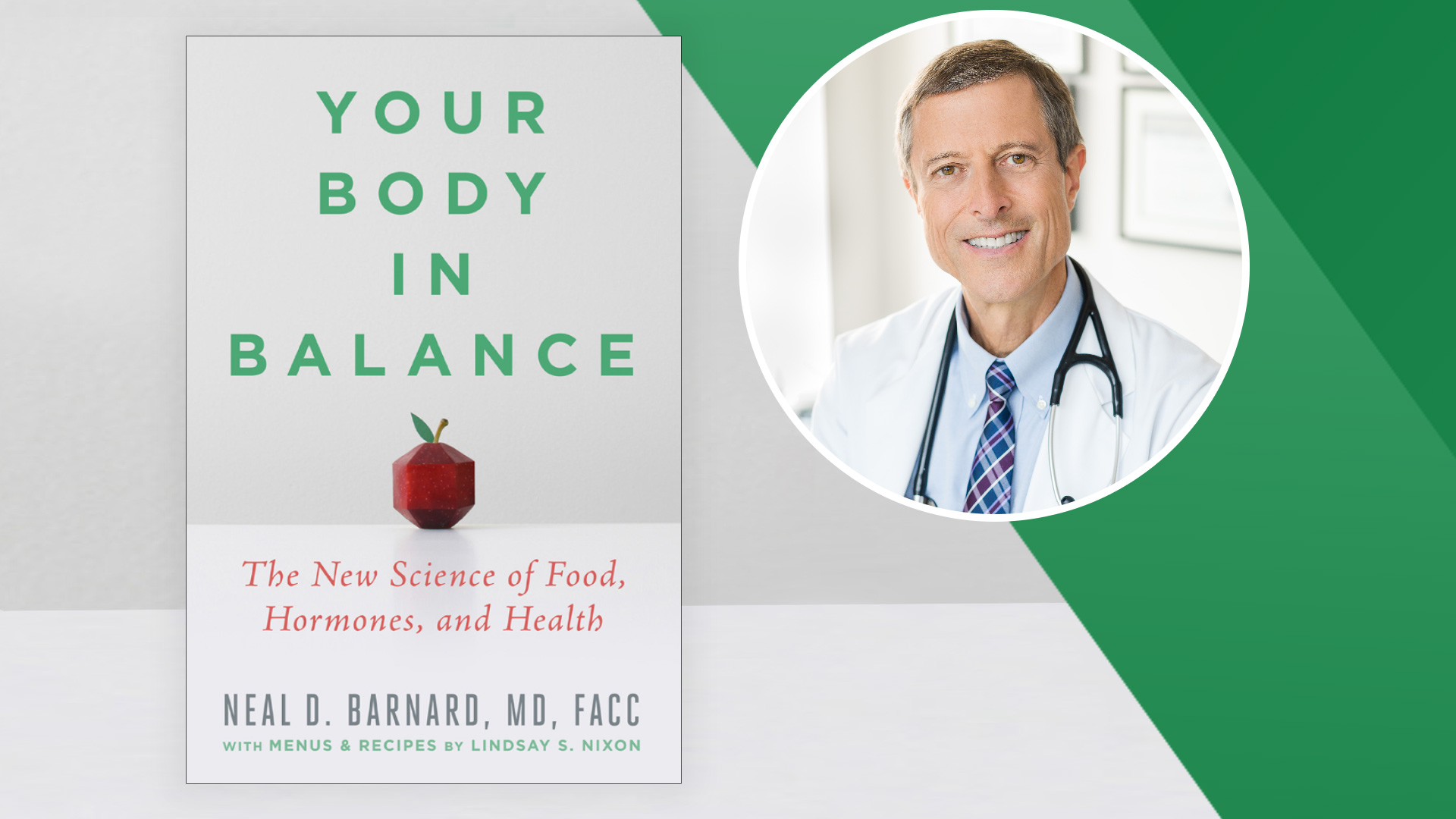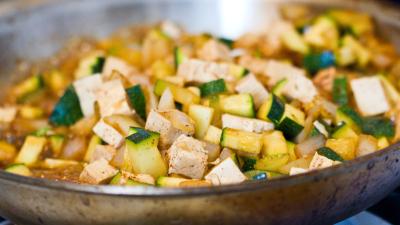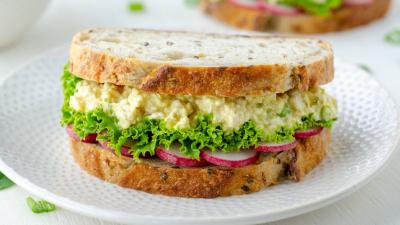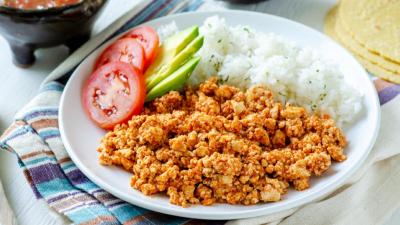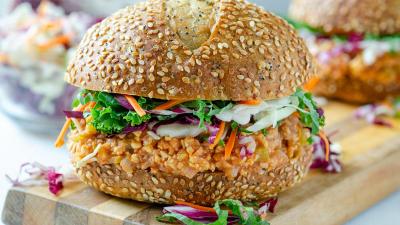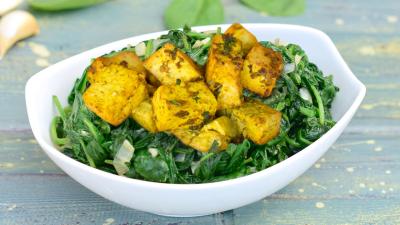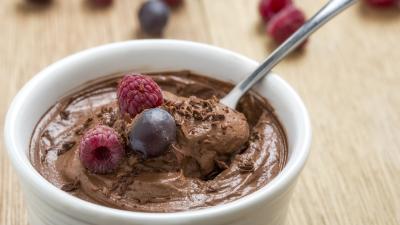Fighting Hot Flashes With Diet
New Study Finds 84% Reduction In Hot Flashes With Plant-Based Diet Rich In Soy
A study published by the North American Menopause Society in the journal Menopause, found a plant-based diet rich in soy reduces moderate-to-severe hot flashes by 84%, from nearly five per day to fewer than one per day. During the 12-week study, nearly 60% of women became totally free of moderate-to-severe hot flashes. Overall hot flashes (including mild ones) decreased by 79%.
The study, called the WAVS trial—the Women’s Study for the Alleviation of Vasomotor Symptoms–shows that diet changes can be much more powerful for treating hot flashes than scientists had thought. Vasomotor symptoms refer to night sweats, hot flashes, and flushes.
The study used no hormone medications or extracts. Instead, the research team tested a combination of a low-fat plant-based diet plus 1/2 cup of ordinary soybeans added to a salad or soup each day.
As many as 80% of postmenopausal women suffer from hot flashes. Heat wells up from the chest, causing flushing, sweating, and chills. At night, hot flashes interfere with sleep. Estrogen-based medications were once routinely used to treat hot flashes but have been shown to increase the risk of breast cancer and other serious problems. Isoflavone extracts from soybeans work only modestly, leaving women and their doctors with few effective options.
Study Details
Postmenopausal women reporting two or more hot flashes per day were randomly assigned to either an intervention group—consisting of a low-fat, vegan diet, including half a cup of cooked soybeans daily—or to a control group that made no diet changes for 12 weeks. Frequency and severity of hot flashes were recorded using a mobile application, and vasomotor, psychosocial, physical, and sexual symptoms were assessed using the Menopause Specific Quality of Life Questionnaire (MENQOL).
Each participant was given a digital self-calibrating scale to track body weight day by day, a mobile app to track hot flashes in real time, and an Instant Pot to prepare soybeans at home. Each week, the group got together with the research team via Zoom.
Key Findings
Total hot flashes decreased by 79% and moderate-to-severe hot flashes decreased by 84% in the intervention group. At the study’s conclusion, 59% of intervention-group participants reported becoming free of moderate and severe hot flashes. There was no change in this variable in the control group.
In previous randomized trials, soy products have been shown to modestly reduce the frequency of hot flashes. The researchers theorize that the effect may be a result of soy products containing isoflavones, which can be metabolized by gut bacteria into equol—a nonsteroidal compound that has been shown in some studies to reduce the incidence and severity of hot flashes. Previous studies have also shown that those following vegetarian or vegan diets produce higher levels of equol. The new study showed a more robust response, using the combination of a plant-based diet plus soy.
Many study participants also reported improvements in sexual symptoms, mood, and overall energy.
How to Get Started
If you’d like to try a diet change to knock out hot flashes, here are the three steps:
- Follow a vegan diet. Include vegetables, fruits, whole grains, and legumes (beans, peas, and lentils). Exclude animal products (meat, poultry, fish, dairy products, and eggs). You’ll find more ideas at PCRM.org/Recipes.
- Limit foods high in fat. You’ll also want to avoid cooking oils and, for now, skip avocados, nuts, seeds, olives, and coconut. For packaged foods, use those with less than 3 grams of fat per serving. This is a challenge, but you can do it! Learn how to cook without using oil in this episode of The Exam Room podcast!
- Eat 1/2 cup of cooked soybeans per day. Soybeans are versatile and can be prepared in a variety of ways. You can buy them at your local grocery store or online. Laura’s Soybeans offers both dry and roasted options, or you can purchase them on Amazon. Prepare dry soybeans with a pressure cooker or on the stovetop. Or purchase soybeans already cooked, in a can. It takes only 40 minutes to prepare them in a pressure cooker until they are nice and soft. Once cooked, you can also roast them. Spread the soybeans thinly on a parchment-lined baking sheet. Season, if desired, with salt, chili powder, garlic powder, or anything else you’d like. Bake at 350 F for 1 hour or until nicely browned and thoroughly dry. Enjoy these as a salad topper, mixed into soups, or even roasted as a snack!
If you decide to follow a vegan diet, it is important to supplement with vitamin B12. To see how the diet is working for you, you can track your weight and hot flashes using an app or pen and paper. You may notice improvements in weight and hot-flash severity or frequency as early as day one.
Below are recipes that include soy-based foods. For hot flashes, use whole soybeans. But you’ll love these recipes, too.
You will find more information and many great recipes in Your Body in Balance: The New Science of Food, Hormones, and Health.
The hot flashes were less frequent, and they were also less intense. I no longer had to change pajamas in the middle of the night due to sweating. The diet made me feel so much better. I have so much more energy, my skin is clearer, and I lost 20 pounds in 12 weeks.
Study participant Margo L., who had experienced extreme hot flashes for 10 years, on her changes she experienced within the first two weeks on a plant-based diet with soybeans
